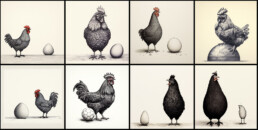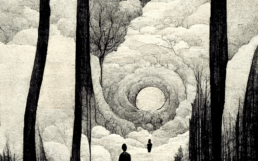Creativity Practice: Frequently-Asked Questions

Creativity Practice x6: Frequently-Asked Questions
“Clowns carry holiday inside them wherever they go.”
- Slava Polunin
There hass been enough conversation about Creativity Practice x6 to notice some recurring questions. So behold! An FAQ list!
Q: Is this a course? If it’s not a class, what is it?
A: It’s a learning and practice group. That means we’ll be a small group of peers who want to somehow kindle / deepen / explore / develop our creativity, whatever that might mean for each person. Not “learn about creativity,” but “find ourselves doing it more, or differently, or better.”
Being in this quest together is way better than trying this on your own. And because we’ll be trying a lot of different things, the answers to “What should we learn about” and “What should we try next” can show up through the life of the group. Probably with different answers for different people.
Q: Wait. Does that mean no lessons or lectures? Then what am I getting for my money?
A: If you mean, “Will there be lessons, and will Marc be teaching us about creativity,” the answer is no. In this group I’m not showing up as a teacher. We’ll all be peers in practice, including me. But/and, there are a lot of inspiring voices for us to hear from. And it’s helpful to have a little structure. So I’m the curator and host, gathering the best stuff I can find for us to take as input, responding to group requests and suggestions, and providing a little structure so we all get a) something valuable and b) room to follow our wild.
This means, right, no lectures. Each session has a mix of audio and video to take in before we gather, curated to stretch, surprise, reframe, invite, provoke, and do a bunch of other verbs.
In sessions, we talk about what we’ve heard, wrestle with difficulties, use playful and/or reflective activities to try on different ways of operating, and get ready for a new set of practices to try over the following two weeks.
What do you get for your money? Concretely, a library of audio and video provocations and inspirations, and a set of scaffolding documents for practices to try. Less concretely, a period of belonging to a group of people who are practicing together, each wanting to stretch in the direction that matters to them, and meeting in mutual support along the way.
Q: Is this an art thing? Is it writing or learning to draw or something?
A: No, it’s not an art thing, unless that’s what you want to make it for yourself. It’s not about any specific medium of expression. It’s about the way we let our individual expression out into the world, regardless of the form that might take. Voice, creative power of expression, liberation from inner critics, creative conversation with the world, wildness of being. Sorta thing.
Some in the group have a specific medium in mind. They want to refresh their relationship with a medium they’ve loved and practiced in the past. The activities and practices will be various. Some invite you to write, or sketch, or walk around with a camera. Not to get better at writing or drawing or photography, but to pursue the chosen practice of the session. Seeing the world in a way that stirs your creative juices, for example. Or finding flow of expression without bothersome interrupting critics, editors, or moms. It’s creativity practice, not drawing practice.
Q: (Variations) I’m hungry for / afraid of a soulful experience. I seek to be stretched / I avoid discomfort. What can you say about that?
A: There’s no developing creativity without having a rummage in our giblets. But we’re each coming from a different history, we’re each bringing our own particular bucket of caca and set of defenses into the experience. This is why I keep using language like “provocation and inspiration” for the material and voices we’ll be engaging with. There will be a lot of invitation. There will be no “must” or “should.” Come as you are, and practice according to your own level of comfort.
That said, I’ll let you know that poetry has been a powerful catalyst for my own creative practice. I’m someone who’s sitting on a long-term-little-done writing project I call “ensouling design.” In recent years I’ve become a student of the life and creative fire that lies inside loss and grief. So yeah… that’s who’s curating the experience. <smile>
Q: Geez it feels kind of like a lot of money. That’s not a question. Just sayin’.
A: Yeah I get that. On the one hand, Baby’s gotta eat. On the other hand, if you feel attracted to this I don’t want money to be the only reason you don’t join. Talk to me.
Details and sign-up
- See the original announcement for more details about this series, including schedule and prices.
- For more about the content, see the post on “Themes and Practices.”
- Sessions will start the week of January 8, 2024. We’re thinking to meet every other week, and will poll the group to find a workable time for all. We’ll set the schedule before December’s end.
- All sessions will be on Zoom (but if folks in the same city want to meet, that’s cool!)
- Yah? Yah!
Creativity Practice: Themes and Practices
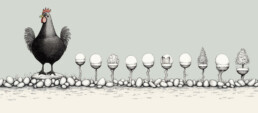
Creativity Practice x6: Themes and Practices so Far
“It’s easier to be creative if you’ve got other people to play with.”
- John Cleese
Not our question: “How does creativity work?”
I’m glad that there are people who take the question very seriously, but that’s not what Creativity Practice is about.
In these sessions, we’re not going to try to explain creativity. No one is going to try to teach it. This is practice, so we’re going to try things, sometimes together and sometimes on our own. We’ll try on different lenses, informed by perspectives and provocations through audio and video from many different voices. And we’ll share results, celebrate outcomes and I-didn’t-even-tries, and generally be in the sandbox together for six sessions over twelve weeks.
Work in progress: how I’m thinking about themes and practices
I have vivid memories of playing in the sandbox growing up. Well, not a box. It was a huge tractor tire turned on its side and filled with sand. And it was great. When I played on my own I simply did whatever I did. There was no plan, no expected outcome. The same was true when I played with my brother or my friend Andy. But when we played together there was usually agreement on some kind of basic theme. “It’s soldiers and dinosaurs with firecrackers.”
Likewise for these sessions we need just a little theme or structure to allow us to explore and try things together. I’ve been thinking about a series of themes, and thought I’d share what they look like so far.
Possible probable themes (feedback welcome)
1. Recovering flow: practicing judgment-free expression
2. First we see – practicing open attention
3. Shifting our source – practice drawing from places other than “figuring it out”
4. I’m torn between…
Recovering play – practicing… well, play!
I think we’ll be doing that as a running practice through the whole thing. So I’m thinking to
use session 4 for a weightier theme:
Shadow and loss as creative source – practicing a generative relationship with the dark
5. Editing and iteration – practice that draws us into discoveries that lie in the details; moving between open and closed modes
6. A succotash of difficulties – working with stuff that gets in the way
We can navigate our priorities together as we go. I’m happy to dance with what shows up among us (though I feel strongly about the first few themes, and am preparing accordingly).
Details and sign-up
See the original announcement for more details about this series, including schedule and prices.
Sessions will start the week of January 8, 2024. We’re thinking to meet every other week, and will poll the group to find a workable time for all.
We’ll meet on Zoom (or something like it), but already there is a possibility of local meet-ups among people who live in the same city.
Creativity Practice x6

Creativity Practice x6
"Practice any art, music, singing, dancing, acting, drawing, painting, sculpting, poetry, fiction, essays, reportage, no matter how well or badly, not to get money and fame, but to experience becoming, to find out what's inside you, to make your soul grow." - Kurt Vonnegut, Jr.
Join us in a sandbox, to deepen and grow confidence in your own creative oomph.
Habits of self-editing, and the weight of high expectations. The voice of our inner critic. Self-doubt, and the unrelenting to-do list. All these can stop the flow of our voice and gifts. Let’s practice getting out from under all that stuff. Let’s remember creative play.
This group was sparked in conversation with a long lost friend, who asked me for help with creativity. We decided we’d like to try getting together every other week, and that we’d like others to join.
It will work like this…
Pre-session inspirations and provocations
Before each session I’ll offer a bit of audio, video, and/or reading. I’ll choose things that inspire, provoke, challenge, or invite a different way of seeing. I have a big collection of stuff from designers, artists, poets, filmmakers, teachers, clowns,…. Some are practical. Some are soulful. Most are both.
Zoom sessions: Learning and trying things together
When we get together, we’ll do three things.
We’ll talk about what we saw and heard in the pre-session provocation. It’s good to chew on this stuff together.
We’ll do stuff. Sometimes together, sometimes by ourselves. We’ll make things, try different ways of seeing, and stretch in a lot of different ways and directions. Based on past experience with this kind of thing, you’re going to surprise yourself.
We’ll encourage and coach each other. Every two weeks we’ll have a new practice—see the next paragraph. When we get together, we’ll take time to compare notes. How did it go? Have any show-and-tell? What was difficult? What was surprising? This kind of mutual learning-by-doing can be gold.
Try different practices, develop new habits
Each week I’ll invite you to spend a little time in practice. We’ll practice seeing and making in different ways. We’ll try different media, we’ll try some different props and tools. The time commitment is up to you. Some practices might take 15 minutes a day, while others may ask for an hour during the week.
I’ve gathered a collection of these practices through years of teaching, facilitation, and general passion for creative development. None of them are difficult. Each of them invites a different stretch a little beyond your routine. A little outside your comfort.
Start in January, six sessions, every two weeks
Sessions will start the week of January 8, 2024. We’re thinking to meet every other Friday afternoon, but will poll the group to find a workable time for all.
We’ll establish the time before you are invoiced, so we make sure you’re only charged if the time works for you. If you are unable to meet for 90 minutes sometime during a weekday, this schedule will not work for you.
Cost
For Winter 2024 I used a tiered pricing approach, invited people to pay according to their ability. That made it possible to grant a “scholarship” to one participant. I’ll do the same for Summer 2024, but the program may be adjusted, and so then the prices. So I’m not showing numbers here until I work them out for the Summer.
Your host: Marc Rettig
Marc has practiced and taught design since the mid-1990’s, at the IIT Institute of Design in Chicago, Carnegie Mellon University, and now at the School of Visual Arts.
In 2008 he became fascinated with questions of creativity—groups creating together, restoring play to people and teams, and deepening or “ensouling” creative work in organizations.
Along the way Marc has fooled around with photography, fiction, poetry, model making, games, video, doodles, and other whimsical modes of expression.
You can learn more about Marc on his personal site: marcrettig.me.

Experiencing emergence with the Systems Game
A simple but powerful way to experience social emergence
In her book, Coming Back to Life, Joanna Macy described a way for people to have “a direct experience of the dynamic nature of open systems.” Since that is a key idea in the Foundations of Design for Social Innovations course in the SVA MFA in Design for Social Innovation, I use Macy’s “Systems Game” to explore ideas of complex social systems.
Something similar happens (almost) every time we play it. Here is the story of what happened with a class in the Carnegie Mellon University School of Design.
Debriefing: some key things to remember about social systems
(…and by “social system” I mean school, family, corporation, local food system, government,….)
After the activity shown in the video, we sat down to debrief and reflect on what we had experienced, listed some of the key characteristics of a social system, and considered the implications for our work.
Emergence
Complexity arises from simple rules and mental models. Only one rule existed here, and look at the complexity that it created.
Interdependence
It shapes me, I shape it! Systems are composed of interdependent actors. When you change what happens in one part of the system, it affects the other parts of the system as well.
It can’t be understood or controlled from the outside
You must step into the system and engage with those involved to see the whole.
Any static snapshot or diagram would be a lie
To understand the behavior of a system, you have to watch it in action over time. A single snapshot won’t help.
Observing parts in isolation won’t teach you about the whole
This system is composed of interdependent parts. We wouldn’t be able to understand the behavior of the whole by studying each part in isolation (piece by piece) or studying just the parts together. We need to see both the parts and the connections between them in motion to begin feeling the whole. We have to expand our view, and even then we would be deceiving ourselves if we said we fully understand.
Change is part of its nature; when pushed, it pushes back
We tend to expect the system to stop; we think that the goal is to find a stable point. In reality, this system could keep moving forever. The only constant is change. While systems may be goal seeking—that is, they try to reach stability—other processes prevent them from achieving equilibrium. The harder you push, the harder the system pushes back.
You are following someone, and someone is following you
We often pay attention only to whom we are following and not to who is following us. How are our actions affecting those around us? Or those who are not in our line of sight?
Cause and effect are seen only in retrospect. Prediction is impossible, and decisions based on predictions will fail
Even knowing the rules and parts, you can’t predict exactly how the system will behave. The outcome is shaped by the rule, the free will of the parts, and the context, i.e., the environment.
Further reading
If this interests you, you might like…
My Notes on Emergence, gathering in an article on medium.com.
A PDF guide to facilitating the systems game, kindly provided by LeAnne Grillo of Reos Partners.
The passport story
An experiment in how to encourage “travel” between subcultures in the organization
Use the player and transcript below to see a five-minute story about a “Passport” experiment, designed to encourage members of a large IT department to grow understanding and relationship with people in another department. The story is from a particular company, but the approach is an example of playfully injecting listening and understanding into a culture. In this video, Fit principal Marc Rettig tells the story and shows examples.
Watch with interactive transcript
![]() Play button is at the bottom of the transcript. Clicking a word in the transcript jumps to that part of the audio. Want it bigger? Click the full-screen button in the bottom-right of the player, or open the live-transcript player in your browser.
Play button is at the bottom of the transcript. Clicking a word in the transcript jumps to that part of the audio. Want it bigger? Click the full-screen button in the bottom-right of the player, or open the live-transcript player in your browser.
Essays on human-centered design
Answers to questions about human-centered design
Here is a series of eight essays, written in 2020 in correspondence with my friend Shinohara Toshikazu in Japan. As he wrote his new book on managing human-centered design, we went back and forth on his questions. In the end, my responses became a chapter in his book.
The questions came from a man with the heart of a symphony-loving humanist, who chooses to work in the center of techno-business and government. My responses come from someone with a foot in two worlds—corporate design and mission-driven community development and multi-stakeholder collaboration.
The first three essays are quoted and linked below. You’ll find the full set of eight essays on the main page for the publication on medium.com.
- Why these essays?
- Understanding of HCD
- The idea of “HCD Management”
- What does “human-centered” mean?
- Design maturity
- Design leadership
- Design’s relationship with nature
- A new focus

Introduction: why these essays?
“I entered the field of design with excitement in about 1996, after fifteen years in software development and ‘systems architecture.’ I sought more humanity in my work. …In the years that followed I don’t believe I ever encountered truly human-centered design. Meanwhile old structures are failing, new ones are unclear, and the forces of belonging and oppression are both in bloom. Design practice and education are part of all that. Design is full of possibility for better ways for us to live together, or for continuing the harms of the old.”

Understanding of “HCD”
Attention to the world, reflection and making, open to being changed by the process.
“In my experience the work of ‘problem-finding’ tends to over-simplify reality. Under-trained in the basics of human behavior, teams make shallow assumptions about people. Under-trained in the basics of social relationships, teams accept shallow explanations. (“Haru is a bad child” vs. “This family system has unhealthy dynamics” or, “there is a negative pattern among children Haru’s age in this community.”)”

The idea of “HCD Management”
“Even in complexity we need management. In the wild, we need management. The drive to control is natural and helpful. And/but, we are on the sometimes-frightening edge of learning to manage in complexity and uncertainty. Some resist this. Some grip tightly onto control. Others are excited to expand their management toolkit with approaches for working with emergence.
Sonja Blignaut, a consultant in social complexity, sometimes says this: “It’s hard to survive in the jungle when you’ve been raised in the zoo.” In my experience many managers handle that difficulty by continuing to insist on better zoo management processes, despite the wildness all around.”
Complexity notes and essays
Wrestling with systems and complexity practices
When I first set out to center my work on social questions in 2009, I went to school on the various threads of systems and complexity thinking. I worry that some readers may see this post and decide that “Rettig is an academic.” Sure, I do love me a broadly potent idea and a good grounding framework. And I’ve taught grad students steadily since the late ’90s. AND I get impatient with stuff I can’t use in practice with groups of people. To do what I do I need a foot in both worlds. (I’ll save the poetic lens for another day).
What are these links?
I aspire to adapt my teaching materials into helpful bits and gifts. (A thing I’ve learned: head knowledge about complexity is fun for some, boring for others, and by itself it’s not enough for anyone. We need to notice our experience of complexity, practice new habits of mind, and add that to our head knowledge.)
For now I thought some folks might be interested to have a list of the collections and essays I made as I absorbed this stuff and began to apply it. If you’re up on this stuff some of these will seem stale. If you’re just getting started, these might save you some time and provide useful perspective.
All the following essays and compilations are available on medium.com/@mrettig.
The problem with problems
The problem-solution mindset serves us well when things are predictable, or will at least yield their secrets to analysis. But for complexity (i.e., anything mostly made of people), we need to add to our kit. This is a short rant about that.
Notes on emergence
I sometimes use this pile of links and videos as the basis for a student assignment. “Surf these links, watch at least three videos, follow your curiosity, then let’s talk about it.” (Disclaimer: I’m aware that the Cynefin references in this piece are seriously out of date.)
Notes on developmental evaluation
When you’re working with long-haul emergence, when the work involves the whole community, when the desired outcomes are new patterns of relationship, story and behavior, how do you evaluate your progress? A beautiful, bountiful community of practice is growing around these questions.
A note about diagramming systems
The community of systems thinking and systemic design is important. And for some folks it’s the kind of thing that really wiggles their giblets—it becomes “the hammer in their hand.” Provoked by an encounter with someone who held system diagramming as a Great Way Forward, I wrote this love/hate letter to systems diagramming.
Notes on relationship constellations
This is more than just a way to see an organization, community or system. It helps us plan, design, and host conversations and activities that touch their web of relationships. I haven’t updated these notes since they were first collected. Meanwhile lots of new stuff has come on the scene. So consider this a starting point for a surfing session, not a current survey. My love to the ORSC community—practitioners of “organizational relational systems consulting.”
Notes on dialogic organizational development
Top-down design-and-implement approaches to change are a dead end. In the world of management and organizational development, that lesson has yet to completely sink in. There’s a lovely and hopeful trend and community of practice in organizational development that takes a “dialogic” approach. They start from the observation that it’s all mostly made of conversations, ask how we can learn to work intentionally with that, and go from there.
Notes on the conversational view
The idea that the stuff we call “social” is largely made of conversations is very useful, but it can be difficult to internalize. The implications and deep, wide, and sometimes subtle. Here are things that might help.
Snippets about play
Open play
is one key
to creative depth.

The Reach Global Design Research Network (of which my firm Fit Associates is a member) recently published its fourth in a series of books—Catalysts: thoughts on design research for meaningful change. The books collect essays and short snippets from projects, all written by members of the network. These snippets are my contributions to the PLAY theme, one of seven themes in the book.
A poetic lens on research and creativity
The fast pace of work and the pressure to perform too often drives teams to move quickly through the creative process. One unfortunate result of speed is shallowness. In research, we are tempted to spend less time with the people who will be affected by our work, treating them as resources from which we extract information rather than co-creators that hold deep wells of stories and meaning. In reflection we often default to simple analysis, looking for patterns in the cold data we’ve collected, but not truly holding conversation with the flows of life that surround our work. In making we feel pressure to deliver, and seldom take time to put our materials and resources in extended conversation with sensed possibility.
In our experience at Fit Associates, play is one antidote to these temptations. In particular, what we might call “poetic play.” It doesn’t have to take a long time to bring more depth to the work, and depth doesn’t have to feel solemn or serious. Play brings a deeper human connection to the challenge and the work, an opening for more purposeful and profound consideration during design, and more friendship and joy of work for all involved. We sometimes involve our team, clients, and the community of use in activities like:
- Making abstract models of the challenge or situation as though looking down from high above
- Sketching ripple effects—our work will affect these people doing these activities in these places, which will affect more people in more activities in more places, which will affect…
- Writing, drawing, or even role- playing based on poetic or mythic views of what’s going on and what’s possible: hero’s journey, inner lizards, angels and demons,…
- Inviting people to take walks in pairs or threes, preferably in nature, with two or three big questions to consider in conversation as they stroll; then gathering in a larger group to discuss themes that arose as they talked.
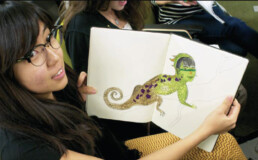
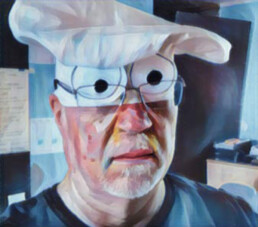
Recovering sandbox time
For us at Fit Associates, what started as an experiment has become an enduring weekly ritual. In conversation with other busy entrepreneurs, we lamented the loss of time for simple play. Our work is creative and satisfying, but always full of expectations. “How long has it been,” we wondered, “since we played like kids in a sandbox, where there is no expectation that we will produce anything or perform well; we just play?”The experiment was to set aside 90 minutes together on Zoom with our friends in Mexico and Colorado. It begins with the question, “What are you thinking of doing today?” and ends with a few minutes to share what happened. Sometimes we play together, sometimes on our own. Sometimes people have a desire: “I’m going to write,” “I’m going to paint.” But often we just don’t know! A breakthrough “method” is this: “I’m going to lie on my back, possibly nap, until I have an idea I’m excited about. Then I’ll get up and play with it.”
Now a year and a half later, we’ve had long-distance rapid-fire photo walks together, we’ve written poems and essays, painted, danced our questions and our moods, napped, shared three-minute sketch challenges, improvised, and thoroughly charmed and surprised ourselves with what can happen in ninety minutes of open play. Through it all we are recovering lost wisdom: open play is a key to creative depth.

